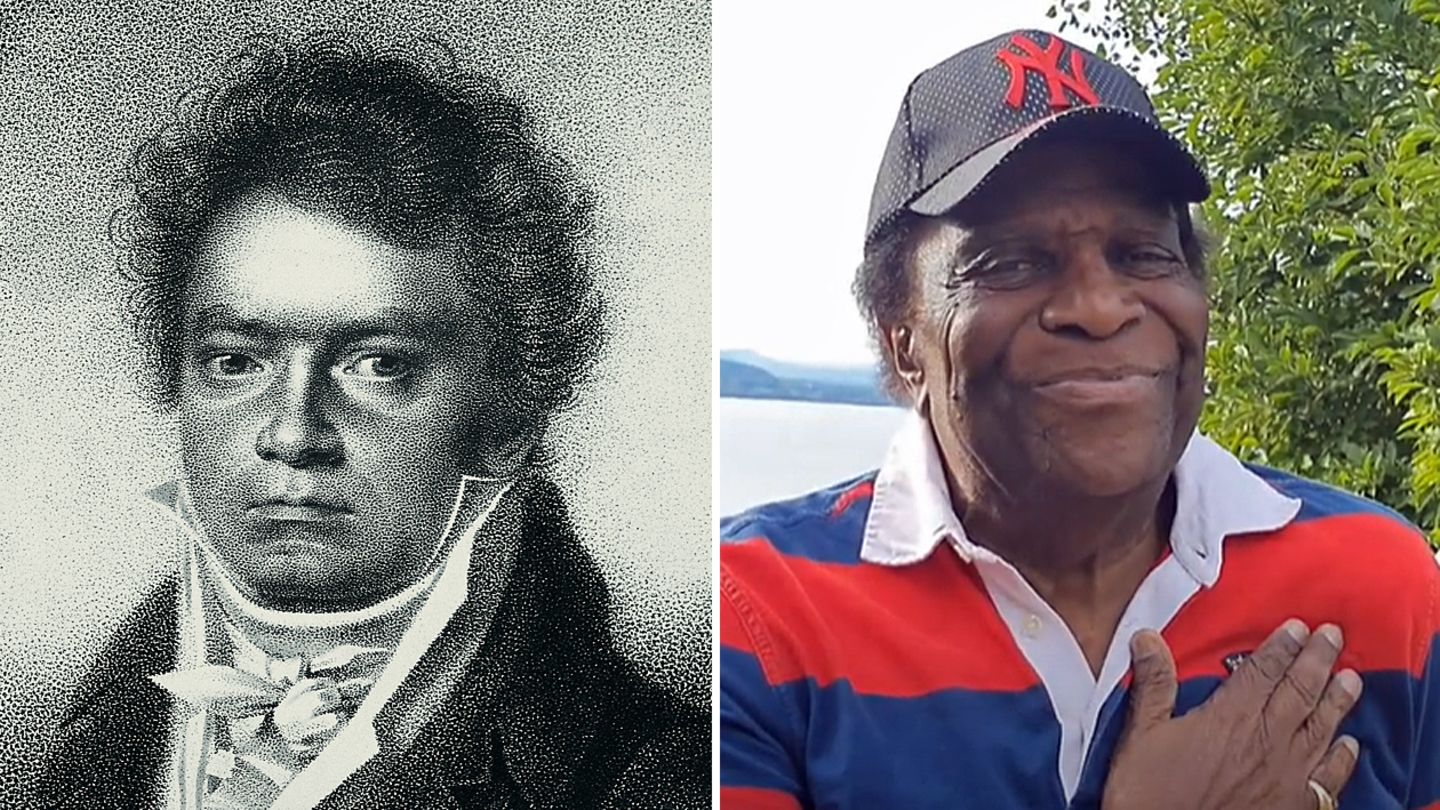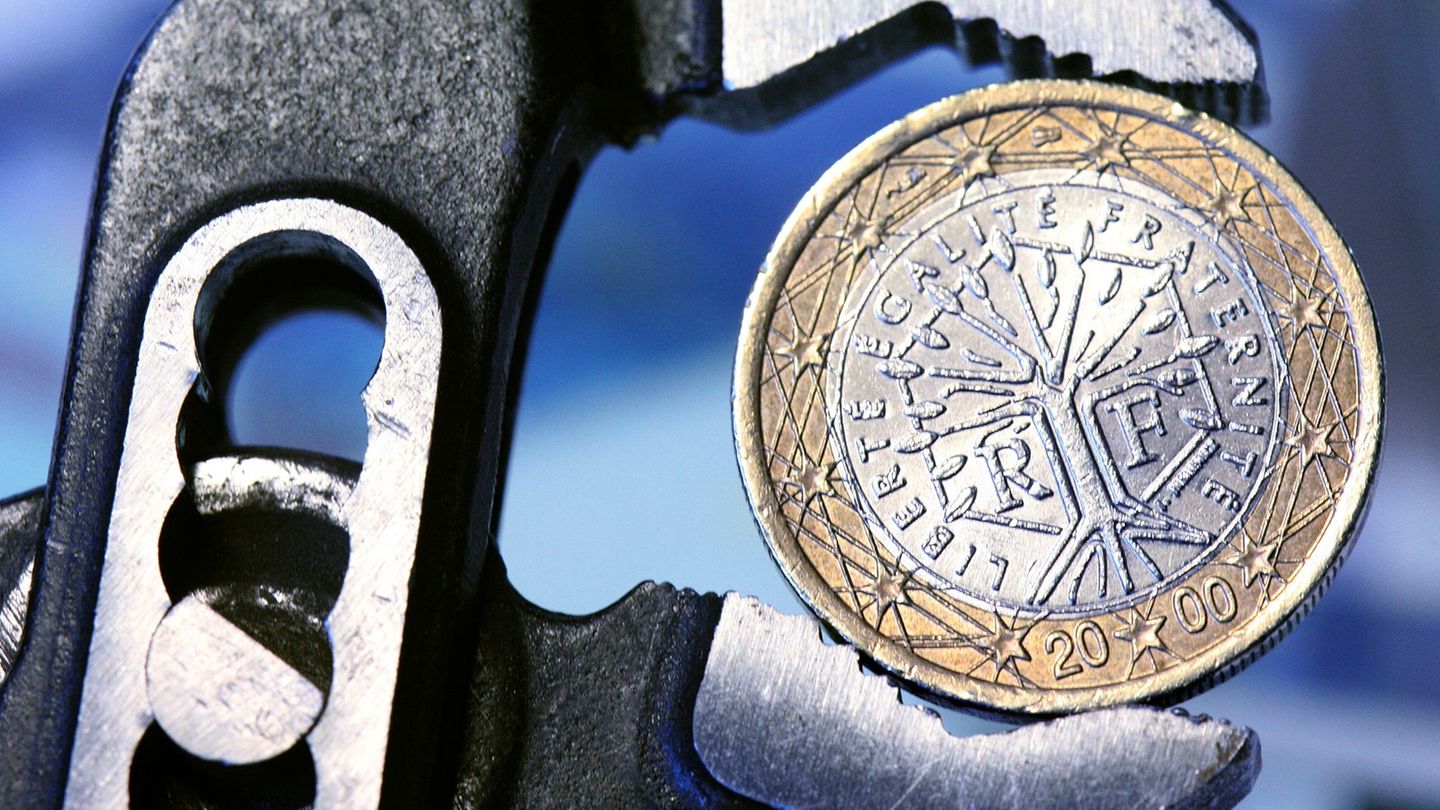Ludwig van Beethoven’s ethnic identity has moved people for a long time. Scientists are calling for a DNA test – and are supported by prominent PoCs such as Roberto Blanco and Tyron Ricketts.
It sounds bizarre, but has a well-founded background: Schlager legend Roberto Blanco approaches the Mayor of Vienna Michael Ludwig with a public video clip and demands the release of the remains of one of the greatest European composers. Scientists should finally create clarity about Ludwig van Beethoven’s ancestry. For a long time there have been indications that the Bonn native could have had African roots. Outwardly he was also recognizable as “People Of Color” during his lifetime. Blanco believes that too, and challenges the mayor with a wink: “I bet that Beethoven looked more like me than you, Mr. Mayor!”
The Berlin film producer Michael Simon de Normier has been trying to advance a scientific investigation for two and a half years and is considered to be the originator of the campaign. Primarily out of artistic interest: The co-producer of the world hit “Der Vorleser” has long been looking for a new, big subject. After successes like the Netflix series “Bridgerton”, where numerous aristocrats of the 18th century and even the fictional British Queen Charlotte are played by black actors, he would be right in the spirit of the times with the story of a PoC Beethoven.
But fiction is not enough for de Normier, he wants to tell the true story – and have it given the authenticity seal of science. In addition to various DNA experts, the media professional has also gathered activists and PoC celebrities around the project. With the hashtag #Wien #schonimmerBUNT, a petition whose first signatories include the Austrian actor, producer and musician Tyron Ricketts and the presenter Milka Loff-Fernandes supports the initiative of a team of scientists who want to use the genetic test to scientifically determine the roots of Beethoven.
Ludwig van Beethoven as a new figure to identify with
“If it turns out that Beethoven was actually black, that would give the Eurocentric view of culture and history a serious kink in the optics,” says Ricketts. “Another step towards the end of white interpretive sovereignty.” Moderator Milka Loff-Fernandes explains: “As a German PoC, however, my pride is always a little clouded. After all, I’ve been mirrored over and over again throughout my life: I’m not ‘really’ German. A black Beethoven would make this argument in the most spectacular way In addition, it could initiate a discussion about the actual value of an active contribution to the social prosperity of a civilization that is finally settling beyond origin and skin color. ” And de Normier also says: “As an early PoC, Beethoven could become a completely new figure of identification almost 200 years after his death.” In other words: Millions of Afro-Europeans have a historical reference figure who is undisputedly one of the most important artists on the continent and who later wrote the Union’s anthem with the “Ode to Joy”.
The historian and genealogist Dr. Ralf G. Jahn sees above all the scientific interest. He has done some sensational research in the past. For example, he traced the pedigree of Paris Hilton back to the 8th century and thus proved that it is not only related to the former US President Theodore Roosevelt, but is even directly descended from Charlemagne. One of his most spectacular research successes was the finding that Friedrich von Schiller’s skull was replaced after his death, which the genetic analysis confirmed in 2009.
Beethoven’s grave is in the Vienna Central Cemetery
Of course, Ludwig van Beethoven is about much more than that. And it would probably also be in the spirit of Beethoven himself, who was friends with the black violinist George Bridgetower, performed with him and dedicated the Kreutzer Sonata to him. The final chant of the 9th symphony “All people will be brothers” was undoubtedly meant to be comprehensive. In the gigantic central cemetery of the metropolis of Vienna, Beethoven’s remains lie among numerous famous musicians and around three million who died in Vienna. Originally, the great composer was buried in 1827 in the Währing local cemetery with the participation of the Viennese population with great pomp, in the presence of Schubert and a funeral speech written by Franz Grillparzer.
The eternal rest shouldn’t last too long, the first exhumation took place in 1863. “There are several documents that indicate that he had dark skin during his lifetime and that he clearly stood out from the average Viennese population,” said Jahn. As he is said to have looked like a Spaniard, he was also called “Spangol” in his youth. According to a press report on the occasion of his reburial in 1888, the composer must have had a “mulatto face” with a “negrid lower jaw” because of his skull. Eighty years after Beethoven’s death, in 1907, the British composer Samuel Coleridge-Taylor, whose father comes from Sierra Leone, brought up the question and – like Blanco today – pointed out external similarities. Coleridge-Taylor had previously experienced racism on a trip to the USA and said in 1907: “If the greatest of all musicians were alive today, it would be impossible for him to get a hotel room in certain American cities.”
The question would later play a role again in the American civil rights movement of the 1960s. The activist Stokely Carmichael said in front of a predominantly black audience: “Beethoven was as black as you and me, but we are not told that.” A few years earlier, Malcolm X had also revealed to an interviewer the thesis that Beethoven’s father was “one of the blacks who hired themselves as professional soldiers in Europe”.
When the grave was opened for the last time on June 23, 1888 in the presence of Beethoven’s composer colleague Anton Bruckner, in order to transfer the bones to the Vienna Central Cemetery, such an investigation could of course not be carried out. In Catholic Vienna, where there is a certain tendency to collect relics outside of the saints’ business, one or the other may also have used the maestro’s skeleton. “Unfortunately, this also creates enormous uncertainty, for example when analyzes of Beethoven’s hair tufts were undertaken, of which there are some whose authenticity is doubtful,” says historian Ralf Günter Jahn. “Furthermore, the investigation we are aiming for is not just about its ancestry, but also about checking the authenticity of the skull,” said Jahn.
Did Ludwig van Beethoven have an illegitimate child?
Another controversial question could be finally clarified: For example, whether Beethoven’s love affair with Josephine Baroness von Stackelberg, the born Comtesse Brunsvik de Korompa, had led to an illegitimate child. “That would be interesting findings for the specialist literature, and we would no longer have to rely on speculation,” says Jahn. “We would first have to prove whether the skeleton and the skull in the grave belong together at all.”
A quite possible variant, as Jahn knows from his Schiller research, in which he was able to prove that Schiller’s alleged skull must have been replaced. “The shape of the so-called mulatto skull in Beethoven’s grave strongly suggests an African ancestry,” said Jahn. “Of course, it could also turn out that this was not the real one. This would also lead to the opposite result – but there was finally certainty.”
But how should African ancestors have come to be in Beethoven’s pedigree, which is teeming with Belgian and Rhineland ancestors? It could be Beethoven’s fatherly roots to Flanders, which make a special origin seem logical, because this was at times under Spanish rule, parts of Spain were in turn occupied for a long time by the North African Moors. The Rhineland, Beethoven’s homeland, is also known as “Europe’s mill of peoples” for a reason. These are possibilities, but not reliable indications.
“We need the exhumation permit from the mayor of Vienna to finally get started,” says genealogist Jahn, who also knows the well-known Innsbruck molecular biologist Walther Parson at his side for the project. You have to know that everything would happen respectfully and scientifically. Beethoven’s remains rest in a pompously designed metal sarcophagus, which can be opened with a simple key.
Roberto Blanco sent his video to the social democratic mayor of Vienna days ago. “I cannot imagine that a social democratic politician in a cosmopolitan metropolis like Vienna would deny Austrian citizens with African roots this wish,” says film producer Michael Simon de Normier. But at the request of the stern Michael Ludwig has not yet received any reaction.
A few days ago the feature pages reported that Terence Blanchard’s “Fire Shut Up In My Bones” was the first work by a black composer to be performed at the New York Metropolitan Opera in 2021. As pleasant as late as this news may be, it might not be entirely true. It wasn’t until 2017 that Beethoven’s Fidelio was re-staged at the Met.
I am a 24-year-old writer and journalist who has been working in the news industry for the past two years. I write primarily about market news, so if you’re looking for insights into what’s going on in the stock market or economic indicators, you’ve come to the right place. I also dabble in writing articles on lifestyle trends and pop culture news.




